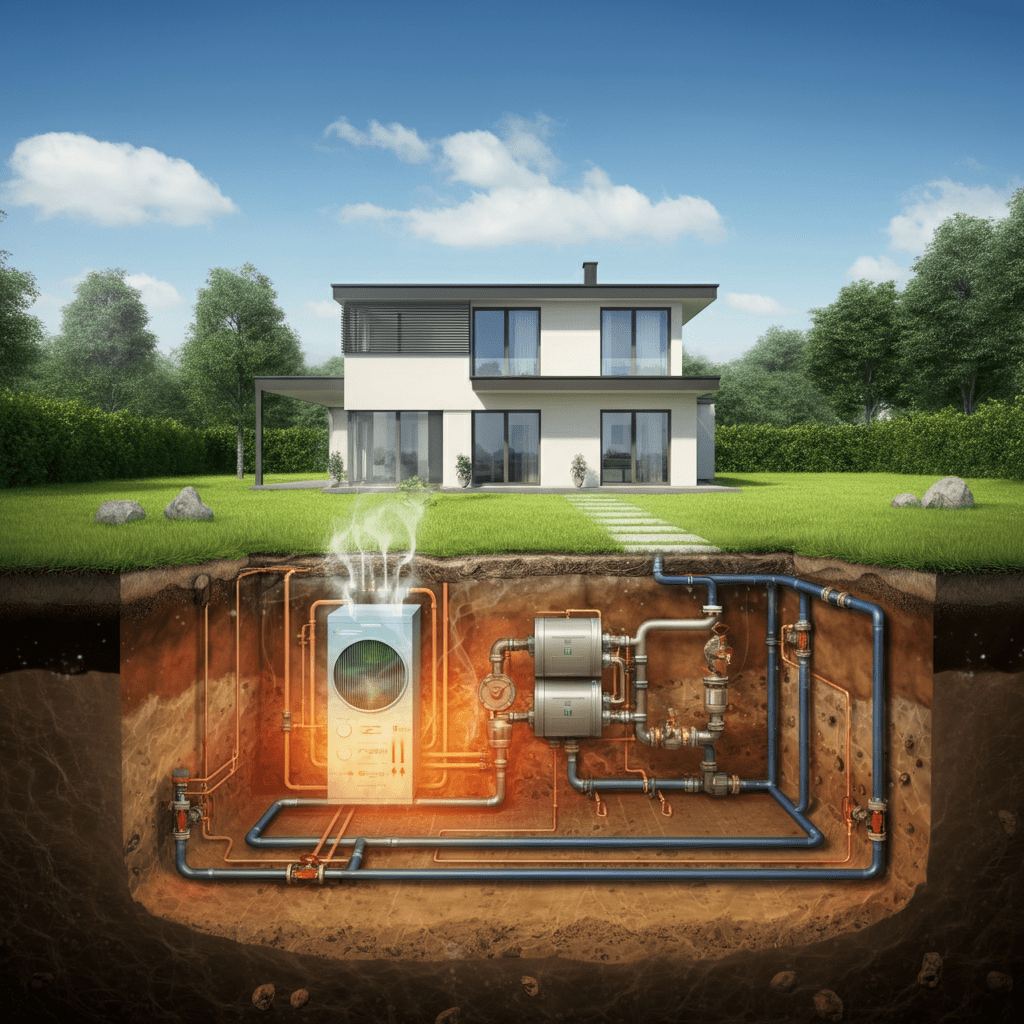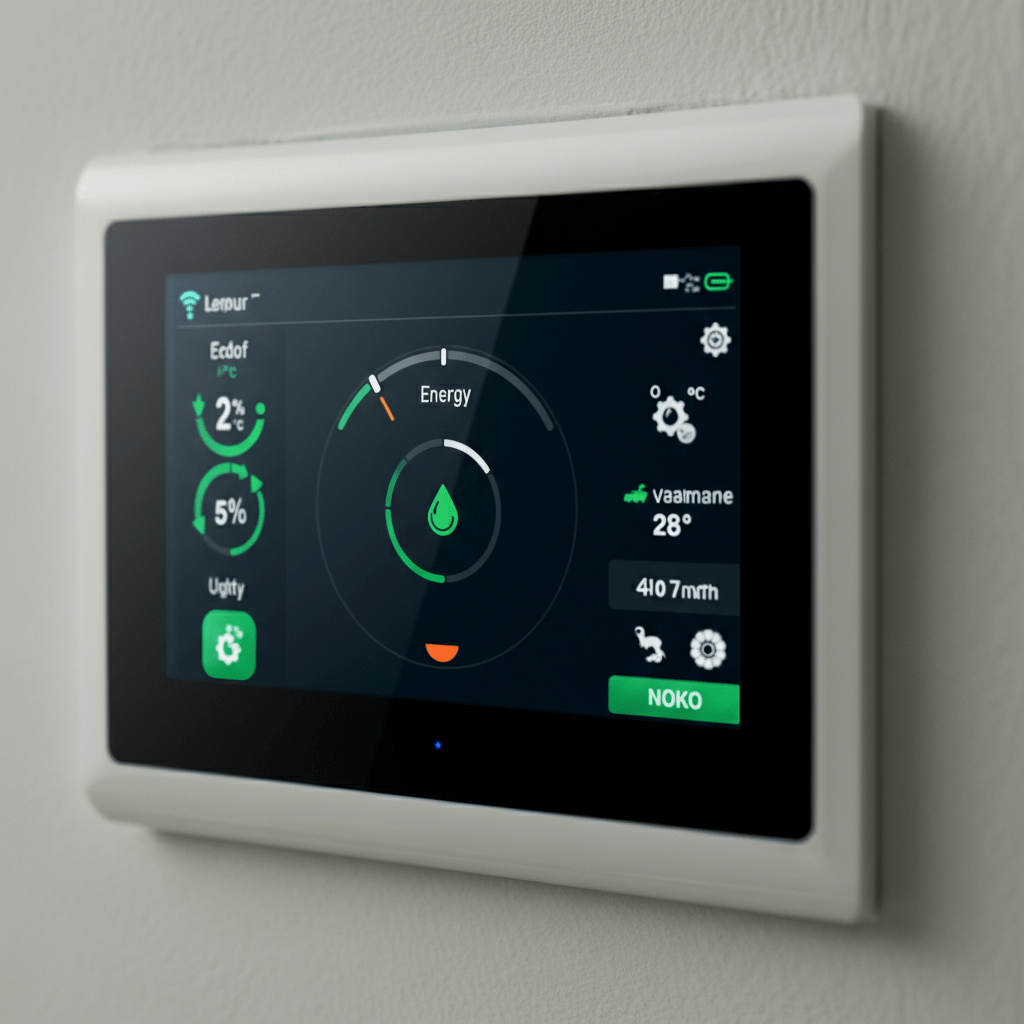Traditional air conditioning systems have been a staple in modern homes but come with significant environmental drawbacks, including high energy consumption and greenhouse gas emissions. With an increasing focus on sustainability, homeowners are now seeking alternatives to reduce their ecological footprint without sacrificing comfort. The demand for Eco-Friendly Air Conditioning Options for Sustainable Homes has never been greater as innovations in green technology offer exciting solutions.
Efficient cooling systems like geothermal heat pumps and passive cooling techniques are reshaping how we think about indoor climate control. Additionally, low-cost options, such as green roofs and evaporative cooling, allow homeowners to make eco-conscious choices within their budget. This article explores ten sustainable options for air conditioning that combine comfort and care for the planet. Whether you’re building a new home or upgrading an existing HVAC system, these solutions can guide your next step toward sustainable living.
The Importance of Eco-Friendly HVAC Systems
Environmental Concerns with Conventional Air Conditioners
Conventional air conditioning systems heavily rely on non-renewable energy sources, emitting harmful greenhouse gases like hydrofluorocarbons (HFCs). HFCs not only deplete the ozone layer but also accelerate global warming. Additionally, traditional units contribute to the urban heat island effect, where dense urban areas retain heat, increasing outdoor temperatures.
Benefits of Sustainable Cooling Solutions
Opting for greener air conditioning offers numerous benefits:
- Lower Carbon Footprint: Systems like solar HVACs reduce reliance on fossil fuels.
- Energy Savings: Modern eco-friendly units are energy-efficient, cutting electricity bills.
- Compliant with Regulations: Many governments incentivize sustainable options through tax credits and rebates.
For a deeper understanding of greener technologies, explore the Green air conditioning: what is eco-friendly AC? to learn how these innovative solutions combat climate challenges.

High-Tech Eco-Friendly Air Conditioning Options
Geothermal Heat Pumps
Geothermal systems work by utilizing the earth’s stable underground temperature to regulate indoor climates. These systems are energy-efficient and eco-friendly, reducing electricity consumption by up to 60%. Although installation costs are higher due to drilling, long-term savings on energy bills make them a smart investment.
Air-Source Heat Pumps
Air-source heat pumps draw heat from outdoor air to cool indoor spaces efficiently. While effective in moderate climates, they show efficiency trade-offs in extremely cold or hot weather. Suitable for retrofitting, they represent one of the most versatile eco-friendly options.
Solar-Assisted HVAC Systems
Solar-assisted systems harness sunlight to power cooling units. They significantly decrease reliance on grid power and offer long-term savings through reduced utility bills. Additionally, many governments offer subsidies for solar panel installation.
High-Efficiency Air Conditioners
Advanced features like variable-speed compressors enhance the performance of high-efficiency AC units. Look for models with SEER ratings above 15 and ENERGY STAR certifications for optimal energy savings. To explore sustainable options, refer to the The Ultimate Guide to Environmentally Friendly HVAC Options for detailed insights.

Sustainable Alternatives to Traditional Air Conditioning
Evaporative Cooling Systems
Evaporative or “swamp” coolers use water evaporation to cool air, offering energy savings of up to 75% compared to conventional ACs. They are, however, most effective in arid climates, limiting their use in humid regions.
Passive Cooling Techniques
Design choices like large windows, cross ventilation, and reflective roofs utilize natural elements to maintain cooler indoor temperatures. Landscaping with trees and shrubs can provide additional shade, reducing ambient heat absorption.
Biomass Heating and Cooling
Biomass systems use organic material such as wood pellets or agricultural waste for cooling and heating. These carbon-neutral solutions integrate seamlessly with existing HVAC systems, creating a sustainable indoor environment.
For a discussion on low-tech alternatives, refer to Low Tech Sustainable Alternatives to Air Conditioners, which explores simple yet effective methods like green roofs and wind catchers.
Low-Tech, Low-Cost Solutions for Sustainable Homes
Green Roofs for Natural Insulation
Green roofs aid in lowering urban temperatures by reducing the heat island effect. They improve insulation, cut energy costs, and enhance air quality. Case studies show temperature drops of up to 7°F in urban areas utilizing green roofing.
Wind Catchers and Ventilation Towers
Wind catchers, an ancient cooling method, rely on natural wind flow to dissipate indoor heat. Modern adaptations of these systems, such as Zion National Park’s visitor center, demonstrate their effectiveness.
Choosing the Right Eco-Friendly Air Conditioning Solution
Factors to Consider Before Installation
- Conduct Energy Audits to determine your home’s cooling needs and inefficiencies.
- Tailor solutions based on local climate conditions and indoor cooling requirements.
- Evaluate system compatibility for maximum efficiency.
Balancing Initial Costs with Long-Term Savings
Though sustainable systems often entail higher upfront costs, they significantly reduce energy expenses over time. Take advantage of government rebates and incentives to mitigate financial barriers.
Regular Maintenance to Maximize Efficiency
Maintenance is essential for any cooling system. Ensure ducts are sealed, filters are cleaned, and units undergo annual inspections. For expert tips on eco-friendly systems, read Eco-Friendly HVAC Solutions for a Sustainable Home.
Innovations in Eco-Friendly HVAC Technology
Advancements in Refrigerants
New refrigerants like R-410A and A2L are replacing ozone-depleting R-22, offering environmentally friendly solutions with higher energy efficiency.
Smart Thermostats
With learning algorithms and app-based control, smart thermostats optimize cooling based on user patterns, significantly reducing unnecessary energy usage.
Comparing the Eco-Friendly Options
Cost Analysis of Different Systems
- High-tech systems like geothermal heat pumps require significant initial investment but yield massive long-term savings.
- Evaporative coolers and passive systems present affordable upfront costs with substantial energy reductions.
For more comparative analysis, visit What Are the Most Eco-Friendly HVAC Systems? where leading options are evaluated based on sustainability and efficiency.
Suitability Based on Climate and Home Needs
Identify systems ideal for your specific climate, whether arid, humid, or moderate. Urban homeowners may lean toward solar-assisted units, while rural homes benefit from geothermal setups.
The Future of Sustainable Cooling Technology
Trends in Green HVAC Innovation
Emerging technologies, such as wind-based systems and solar-integrated cooling, are paving the way for a greener future in HVAC solutions.
Long-Term Impact on Global Energy Consumption
The transition to renewable-powered cooling has the potential to cut global electricity use drastically, helping achieve climate change mitigation goals.
The Role of Homeowners in Promoting Sustainability
Small Steps to Reduce Energy Use
- Adjust thermostats strategically.
- Use ceiling fans to circulate cool air effectively.
- Seal windows and doors to minimize air leakage.
Adopting a Sustainable Lifestyle
Pair eco-friendly air conditioning with other green home practices like efficient lighting and water conservation. Community-driven adoption can amplify the environmental benefits of sustainable cooling initiatives.
Conclusion
From geothermal heat pumps to green roofs, eco-friendly cooling options provide a versatile range of solutions for sustainable living. By adopting these systems, you contribute to financial savings and a healthier planet. Every homeowner has a role in building a sustainable future. Whether large-scale upgrades or small energy-conscious changes, commitment to eco-friendly cooling ensures comfort and responsibility coexist harmoniously.











